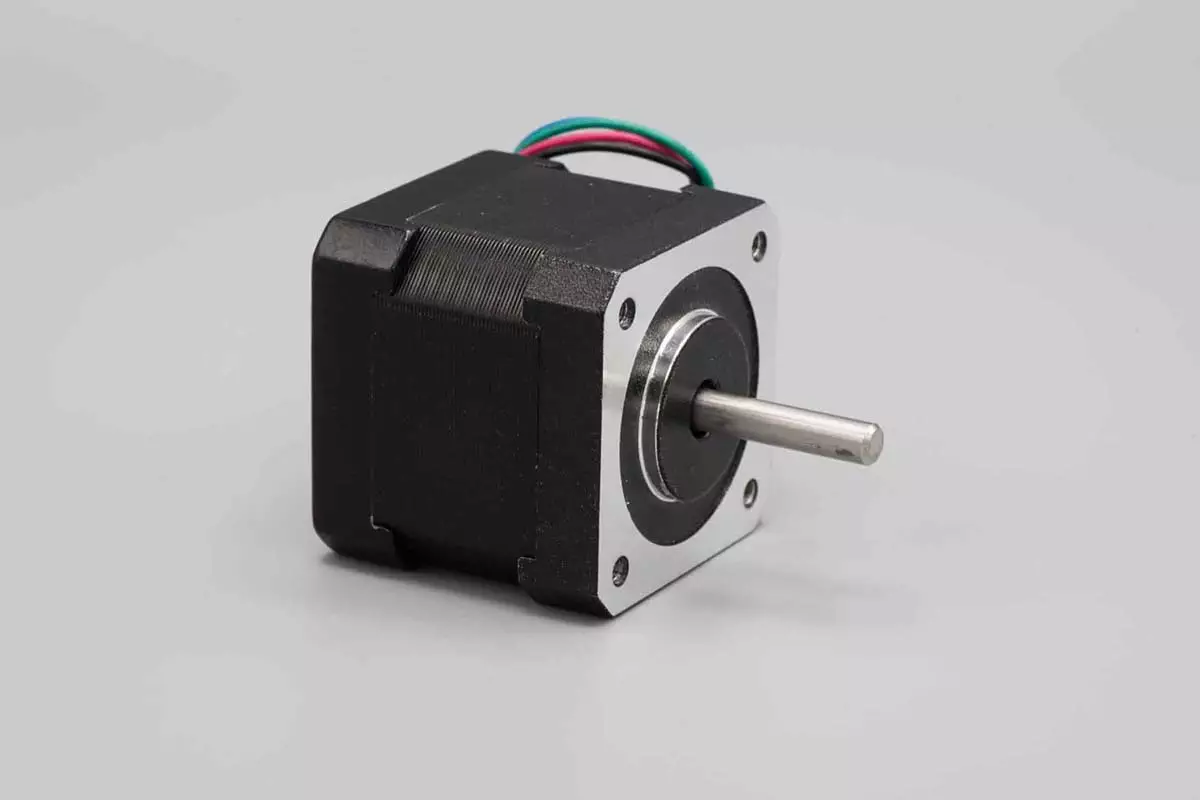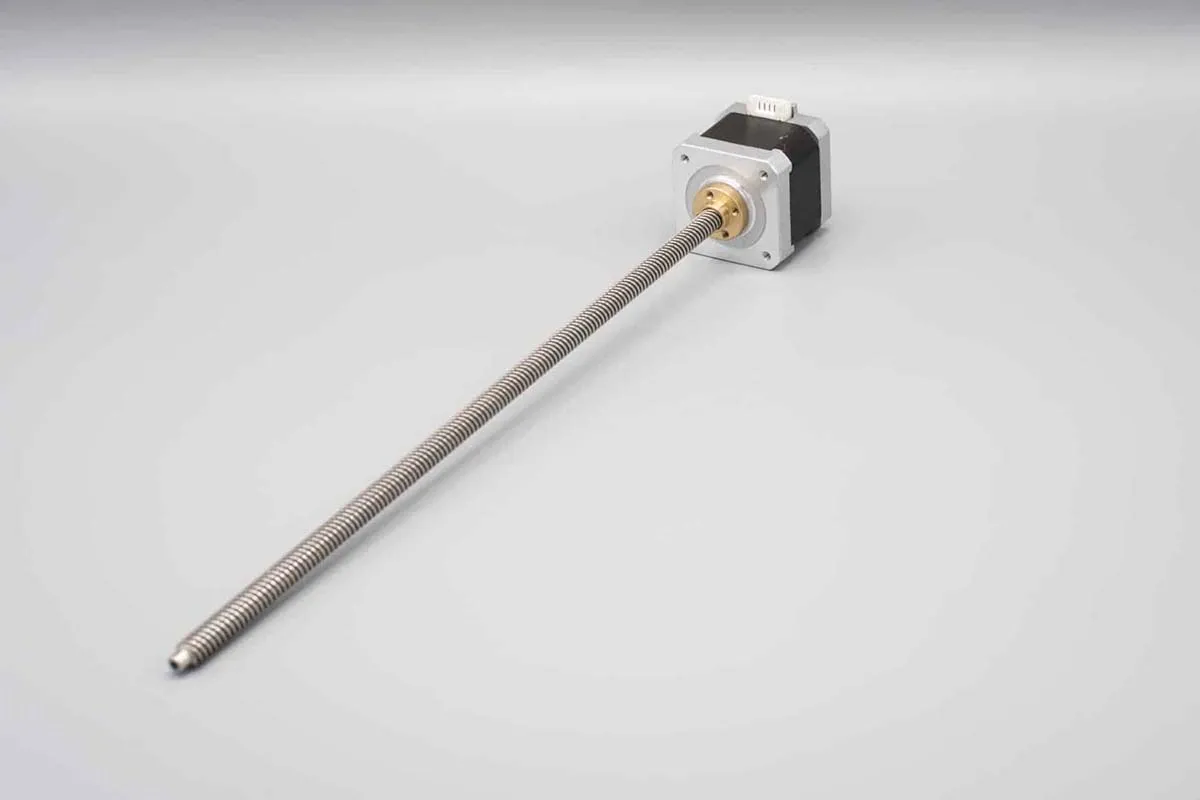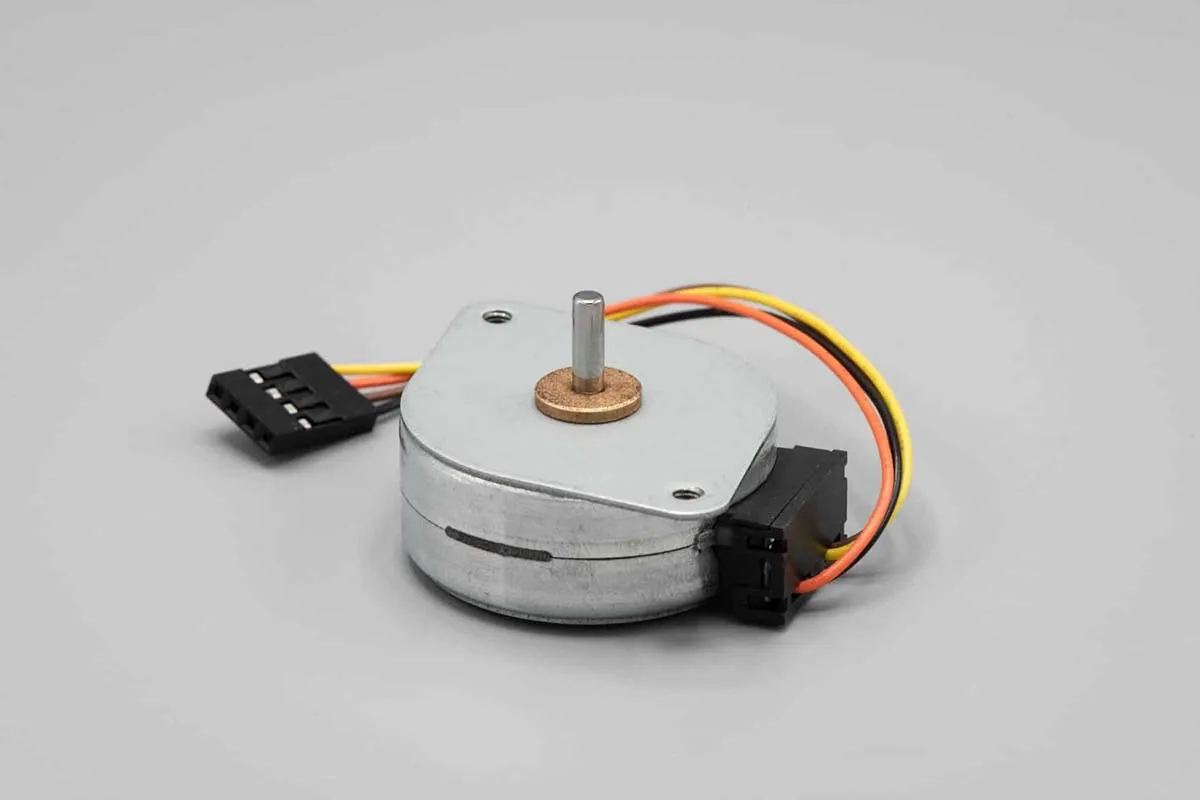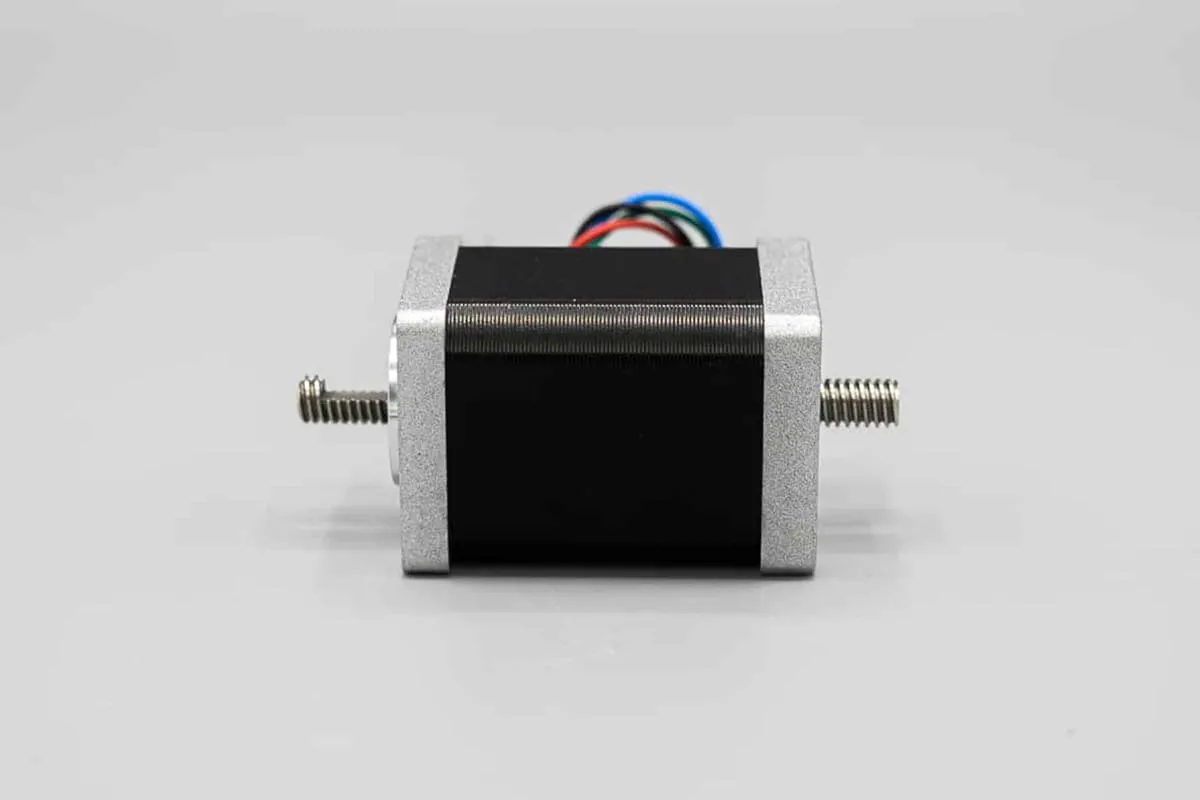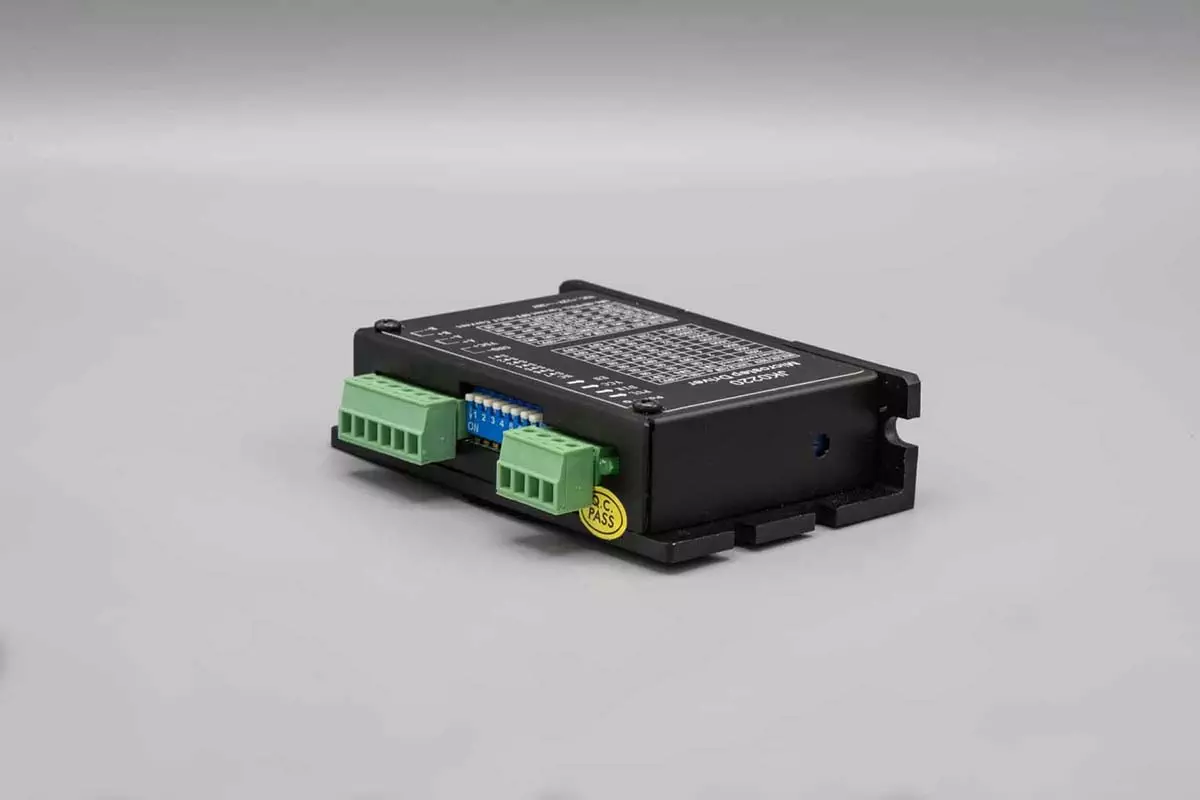Stepper Motors
ISL Products provides value-added Stepper Motor solutions for a variety of customers and applications. We are one of the most customer-focused stepper manufacturers in the world. The range of steppers we offer provide excellent torque output, precise positioning, and serve as a cost-effective solution for all motion control applications. We provide many types of stepper motors such as Hybrid steppers, as small as NEMA 8, to Flat Permanent Magnet Stepper Motors. We also offer Geared Stepper Motors for applications with higher torque requirements. We continue to push stepper technology to the next level.
Most stepper manufacturers will only offer a standard stepper motor catalog of stock items. As a leading manufacturer of various motion control solutions, ISL Products offers tailored stepper and geared steppers solutions at a very cost effective price. We work with our customers to provide solutions rather than try to push standard products. Our hybrid stepper motors are the most popular and can be found in a vast range of applications. Let us know how we can help you!
Popular Models & Part Numbers
MOT-11HS-51-067-4 – This model is NEMA11 frame size hybrid type with a 1.8° step angle. Rated operating conditions: 6 VDC /1.2 kg.cm / 2 phase.
MOT-I-81511 – This model is NEMA8 frame size hybrid type with planetary gearbox and 1.8° step angle. Rated operating conditions: 4.3 VDC /15 kg.cm / 2 phase.
MOT-I-81656 – This model is NEMA17 frame size hybrid type with a 1.8° step angle and integrated connector. Rated operating conditions: 12 VDC /3.4 kg.cm / 2 phase.
MOT-I-81610-157 – This model is a 20mm PM type with planetary gearbox and 18° step angle. Rated operating conditions: 12 VDC /4 kg.cm / 2 phase.
MOT-I-81610-370 – This model is a 20mm PM type with planetary gearbox and 18° step angle. Rated operating conditions: 12 VDC /10 kg.cm / 2 phase.
Geared Stepper Motors – The Perfect Solution Higher Torque Applications
Geared Stepper Motors are simply a hybrid stepper motor coupled with a speed reduction gearbox. We design our stepper gearboxes with planetary gears for superior performance. They are ideally suited for applications where low speed, high holding torque and precision positioning is required. The gear box addition provides a much higher overall maximum torque output. We can offer a wide range of gear ratios on all of our to provide the best torque and speed output your device demands
Stepper Motors vs. Servo Motors
Stepper Motor Functionality
A Stepper Motor is a type of BLDC or brushless motor that divides a full rotation into several equal “steps”. Stepper Motors are controlled by electrical pulses sent from a stepper motor driver or controller. The stepper motor driver is used for speed control and position control of the stepper motors by holding fixed-step angles and controlling the rotational speeds and direction of rotation. A power supply will supply the voltage to the motor through the controller.
Our steppers can be controlled via either an open or closed-loop system. We manufacture our Stepper Motors with various step angles, most commonly 1.8 degree, which equates to about 200 steps per revolution. In order to meet all of our customers needs, we also offer 0.45 degree and 0.9 degree step angles. The most common applications for open and closed loop stepper motors are CNC machines, laser cutters, disk drives as well as being used as 3D printer motors.
The National Electrical Manufacturers Association (NEMA) set standards for companies that produce electrical products, such as electric motor equipment and wiring that’s used in industrial facilities. Hybrid stepper motors are one such product categorized by NEMA, designating each a frame size (such as; 11, 23 or 34). As an example, a NEMA 23-size hybrid stepping motor would have a mounting face size of 2.3 inches square, and subsequently, a NEMA 17 hybrid stepper motor would have a 1.7 inches square sized mounting surface. Our steppers typically run off DC power, we don’t typically offer AC motors.
How are Stepper Motors different that BLDC Motors?
The “steps” of a stepper differentiate it from a standard BLDC motor. This mode of operation is different to most standard DC motors, which rotate continuously until the voltage cuts off.
Both steppers and BLDC motors are low-cost and suitable to use in a wide variety of applications. However, stepper motors can operate at higher torque even when running slower, making them best suited for applications requiring high precision at low speeds.
How Does a Stepper Motor Work?
Stepper motors use a digital input, which allows them to achieve accurate motion control.
These pulses pass through a series of coils arranged in phases so they can be turned on and off in quick succession.
The motor driver controls speed and position by holding fixed-step angles. In a stepper motor, electric pulses are converted into exact and repeatable movements. As a result, the full rotation is essentially split into much smaller, equal parts. The part-rotations, in which the stepper motor moves through a set of angles, allow it to achieve more precise movements. This results in more controlled rotational speeds and rotation direction.
Voltage passes through the controller to supply power to the motor. This power supply can be controlled through an open or closed-loop system. Most stepper motors are digital and are vital for motion control positioning in an open-loop system. So a stepper motor is ideal for applications that demand highly accurate movements thanks to its ability to execute precise rotation positions.
Unique Advantages of Using a Stepper Motor
Stepper motors offer several unique advantages over other models, including DC and AC motors. These benefits include:
- High precision: Stepper motors can move in precise increments, making them ideal for applications that require accurate positioning or repeatability.
- Excellent low-speed performance: Stepper motors offer outstanding performance at low speeds, which is helpful for applications requiring slow and controlled movement. They are also useful for applications requiring high torque at low speeds, including 3D Printing, CNC Milling, and robotics.
- Cost-effective operation: Steppers are generally less expensive than other motors with similar performance characteristics and consume relatively little power.
- Minimal maintenance: Stepper motors, like brushless DC motors, require less maintenance to remain effectively functional for longer.
You can always get in touch with our component specialists for more detailed information on how a stepper could benefit or work for your particular application.
ISL Products vs. other stepper manufacturers
There are many stepper motors on the market. So knowing which stepper motor you should buy and which stepper manufacturer is best can be challenging. There are many things to weigh up, from cost to application possibilities.
Currently, most stepper manufacturers only offer a standard stepper motor stock catalog. Unfortunately, this often means that customers must settle for a stepper motor that doesn’t fit all of their requirements exactly.
Here at ISL Products, we work with our customers to find a solution rather than just pushing the standard stepper motor that is the closest fit for your application. You get the best-suited solution when you combine our expert customization options with the wide range of ISL-designed and manufactured high-precision stepper motors, geared stepper motors, and hybrid stepper motors.
Our standard stepper motors are manufactured with step angles of 1.8 degrees, which equates to around 200 steps per rotation. However, ISL Products understands that this option may not suit every customer application. Therefore, our team also produces steppers with 0.45 and 0.9 step angles. You are more than welcome to discuss the angle and other requirements of your application with our team to ensure your stepper motor is built to suit your needs.
Customers can also find cost-effective solutions despite our dedication to quality and tailor-made stepper motors. An ISL Products stepper is best suited to those who want higher torque and superior precision for motion-controlled applications. In particular, our geared stepper motors are ideal for applications with higher torque requirements.
What are the different types of stepper motors?
There are several types of stepper motors on the market, and you may want a different kind depending on the requirements of your specific application.
The permanent magnet stepper motor (PM) is one of the most widely used. They use a permanent magnet for the rotor, and the stator is made up of several electromagnets. This design means that no external action is required. As a result, this type of stepper rotor is very efficient and is compatible for use in many applications.
Another popular type of stepper motor is the variable reluctance stepper (VR). This type of stepper uses the simplest design with a soft iron rotor and stator with multiple teeth. The stator teeth are energized sequentially to rotate the rotor. Variable reluctance stepper motors have lower dynamic torque production but less torque reduction when operating at high speeds, making them most suitable for mid or high-speed applications.
The last of the three main types is the hybrid. The construction of a hybrid stepper motor incorporates aspects from two other types of steppers, variable reluctance and permanent magnet types. It utilizes the high torque density of a permanent magnet stopper with the smoothness and reliability of variable reliance models. A hybrid stepper motor offers higher resolution but tends to be more expensive.
ISL Products can also offer geared stepper motors, which are hybrid stepper motors with a speed-reduction gearbox. By using planetary gearboxes in the design, we can provide superior performance. Our geared stepper motors are ideally suited for applications which require low speed, high holding torque, and precision positioning. Adding a planetary gearbox to a hybrid stepper model increases the maximum torque output. We can also offer a wide range of gear ratios to tailor torque and speed output for your device demands.
Beyond these three main types, stepper motors can be further classified into bipolar and unipolar motors. In a unipolar stepper motor, the current flows in one continuous direction, with either the A+ or A- coils powered. Whereas in a bipolar stepper motor, the current flows in both directions and A+ and A- coils are powered simultaneously.
Don’t hesitate to contact us for more information on stepper motor types and how we can tailor our motors to better suit your demands.
What are stepper motors used for?
Stepper motors are used in various applications where precise control of a motor’s position is needed. They are instrumental in applications where a specific number of steps need to be taken for precise rotation, such as in CNC machines, 3D printers, and robot arms.
3D printers must translate digital scans into physical 3D objects and require a motor that performs accurate rotations and actions. A stepper motor can provide the desired tightly controlled movements separately and together without adding surplus sensors and software.
CNC machines offer manufacturing according to pre-programmed software controls, often in factories. Traditionally servo motors have been favoured for use in CNC applications, but stepper motors are increasingly popular as an equally versatile and cheaper alternative. Additionally, since stepper motors are brushless, they are more reliable and require less maintenance than servo motors.
Stepper motors can also frequently be found in applications like disk drives, medical instruments, and telecommunications equipment. In addition, because you can control them with high precision and accuracy, they are often used in precision motion control systems.
Stepper motor industry standards
The National Electrical Manufacturers Association (NEMA) is America’s largest trade association for electrical equipment manufacturers. It is responsible for setting standards for the production of electrical products. All companies manufacturing electrical products, such as electrical motor equipment or wiring used in industrial facilities, must follow NEMA standards.
Hybrid stoppers are one such product categorized by NEMA, which designates, for example, the required frame sizes (11, 23, or 34). The NEMA 23-size hybrid stepping motor has a mounting face of 2.3 inches square, while the NEMA 17 hybrid stepper motor has a 1.7-inch square mounting surface. ISL Products’ hybrid steppers run off DC power.
You can rest assured that any electrical products, including stepper motors, purchased from ISL Products follow the necessary NEMA guidelines. Thus, you will be guaranteed your equipment is compatible, safe, and functions to a high standard.
Stepper motors are an ideal solution for those needing excellent torque output and precise positioning motion control applications. They are also cost-effective and require relatively little maintenance. And with ISL Products, you can enjoy the additional benefits of a customer-focused stepper motor manufacturer. We offer and tailor a wide range of stepper motors so you can get something perfectly suited to your specific application needs.
Read our Stepper Motor Fundamentals design note for additional technical information on how stepper motors function. Or, learn more about how we offer value-added stepper motor solutions by checking out our Case Studies.


